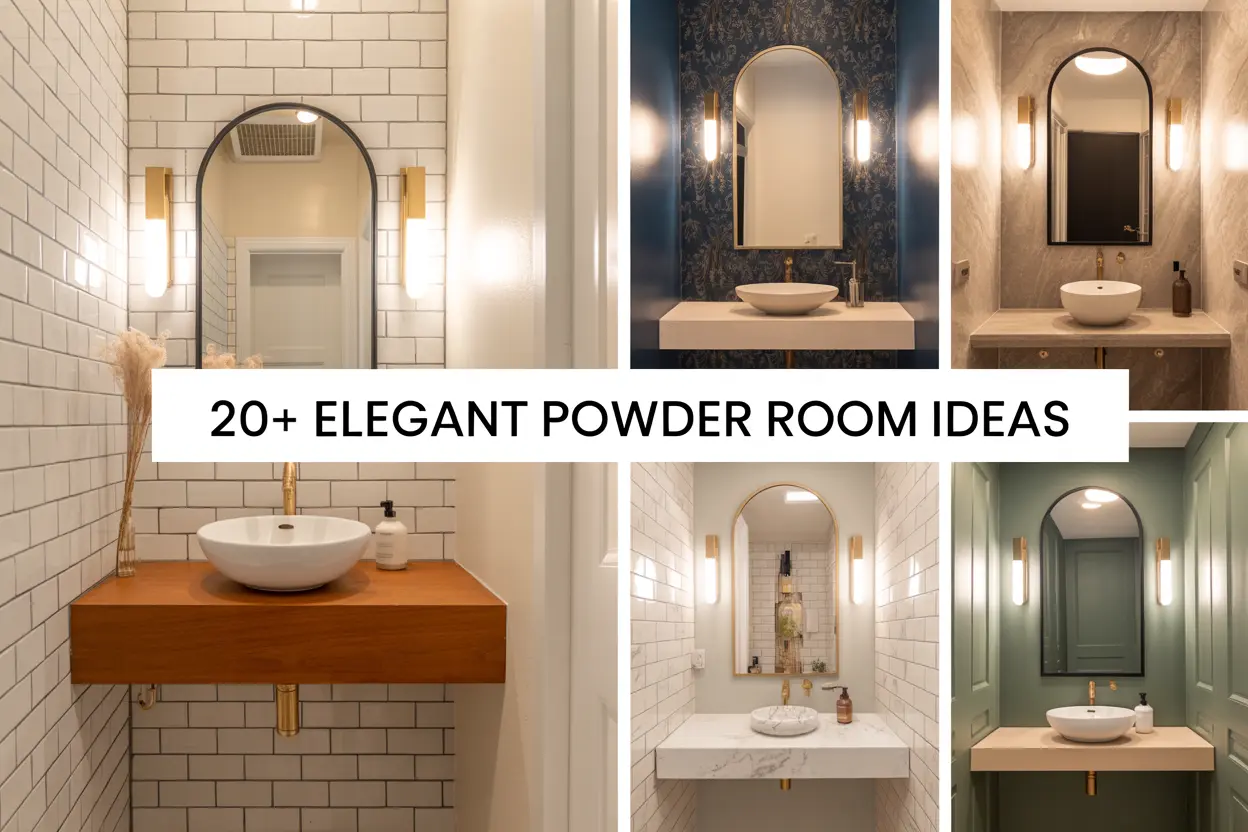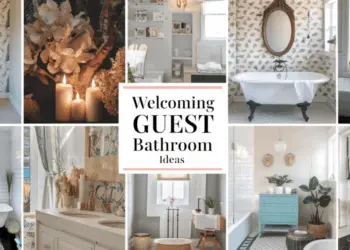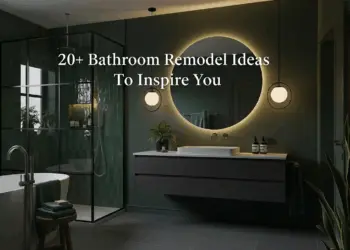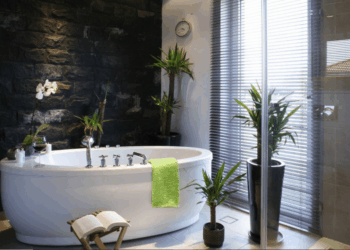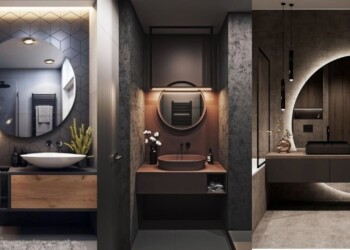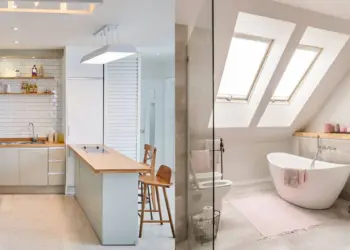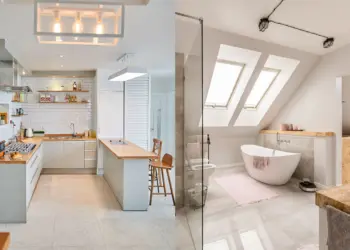The powder room, an essential area in any house, should be both practical and visually beautiful. Whether it’s for a quick refreshment in the morning or a soothing bath at the end of the day, it’s important to design a powder room that satisfies your demands and expresses your own style.
In this article, we provide a thorough explanation of how to create a powder room that is a haven of relaxation, from design choices to functional additions
Table of Contents
The difference between a bathroom and a powder room
When you want to remodel or create a bathroom, the first question to ask yourself is: do you want a bathroom or a powder room? From this decision all the others follow. The difference between the two rooms is very simple: in a bathroom, you’ll be taking a bath, so it will at least have a bathtub; in a powder room, on the other hand, you’ll only have a shower.
The rest of the room remains unchanged. You can install vanity units or washbasins, toilets and shelving of all kinds.
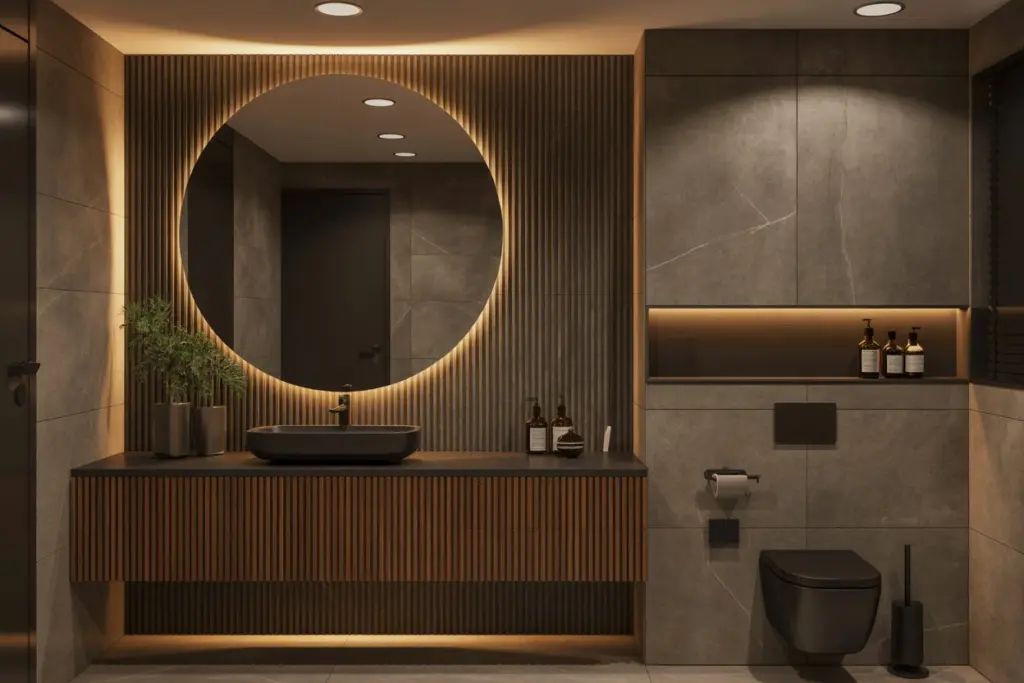
The practical side of the powder room
As we mentioned earlier, a powder room does not include a bathtub. It is ideal for smaller rooms or when you want to avoid knocking out a wall.
The shower, which is simple and easily accessible, is perfect for the elderly or disabled. This is especially true if it is flush-mounted.
Additionally, it offers practicality for daily grooming, being more practical and less slippery than a bathtub.
Lastly, it helps reduce water usage, benefiting both your bank account and the planet.
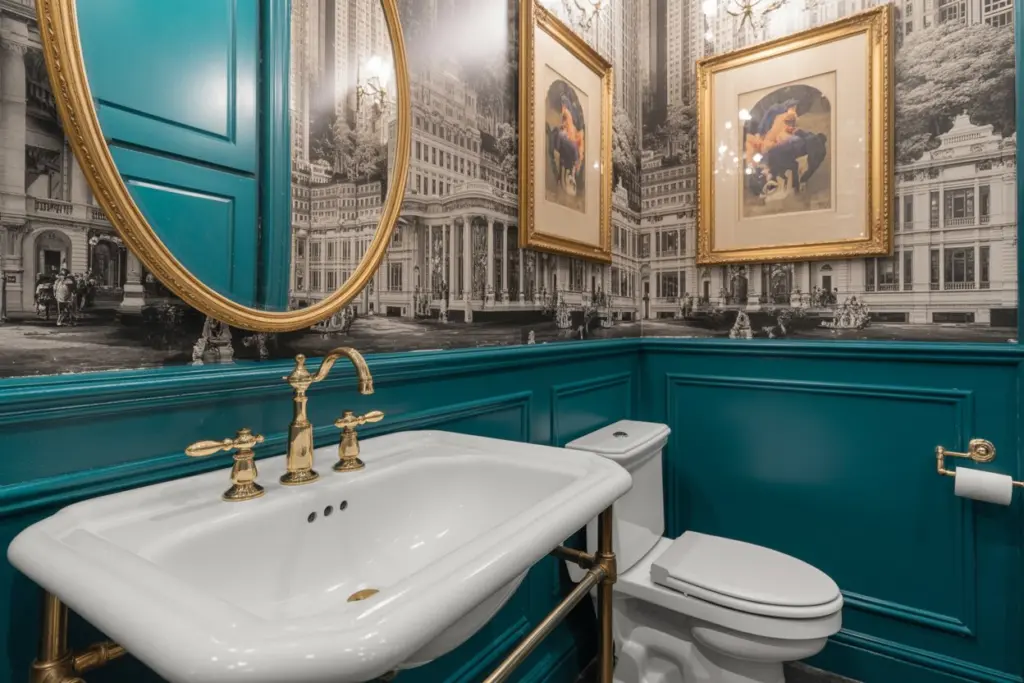
Planning and design a powder room
Analysis of space available
Measuring the area available for your powder room before beginning any restoration or building project is crucial. This step involves considering fundamental factors such as room size, structural limitations, and already-installed fixtures. By taking these measurements and considering these factors, you can make informed decisions and create a well-planned and functional powder room.
Determining needs and objectives for powder room
Every individual has unique needs for their powder room. We will assist you in defining your priorities, whether they include a spacious shower, a relaxing bathtub, sufficient storage space, or other specific features. By understanding your requirements, you well be able to create a powder room that meets your specific preferences and lifestyle.
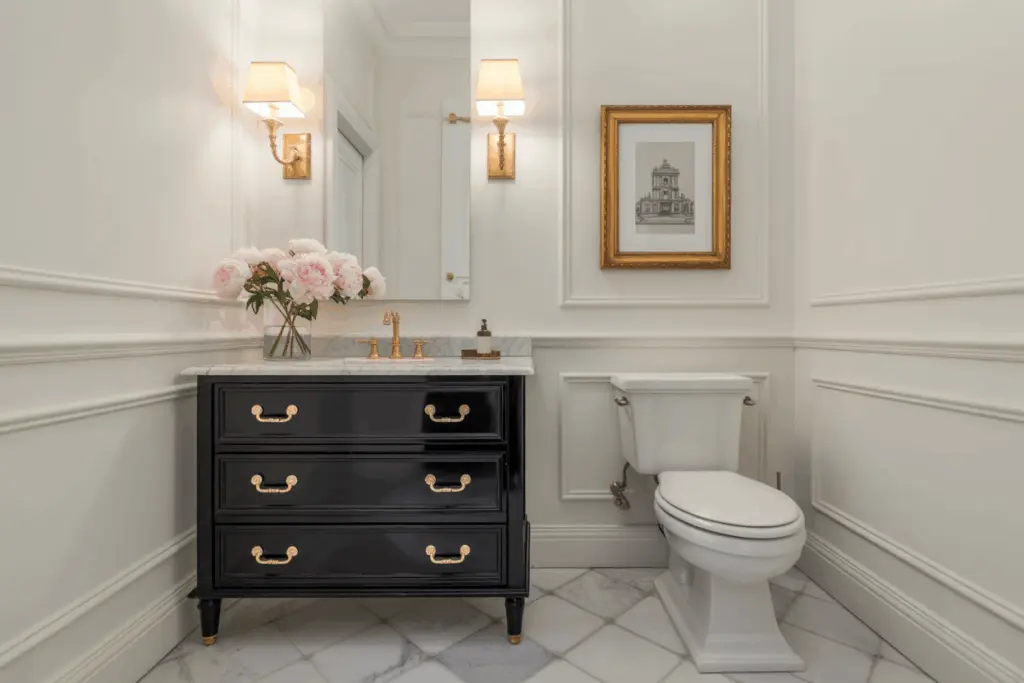
Powder room: Style and ambience
The choice of style is a key element in the design of a powder room. We’ll explore various design options, including modern, minimalist, classic, and contemporary styles, and We will provide advice on creating an atmosphere that blends seamlessly with the rest of your house.
Modern Style
When aiming for a modern style, it is crucial to emphasize sleek lines and clean designs in your home. Opt for sleek and simple fittings that will complement the overall aesthetic. To infuse visual excitement, consider selecting a monochromatic color scheme or incorporating strong, contrasting hues. Enhance the modern aesthetic by incorporating materials such as glass, metal, and concrete into your design elements.
Additionally, to create an open and breezy ambiance, contemplate the use of wall-mounted fixtures and floating vanities. By incorporating these elements, you can achieve a modern look that is both visually captivating and inviting.
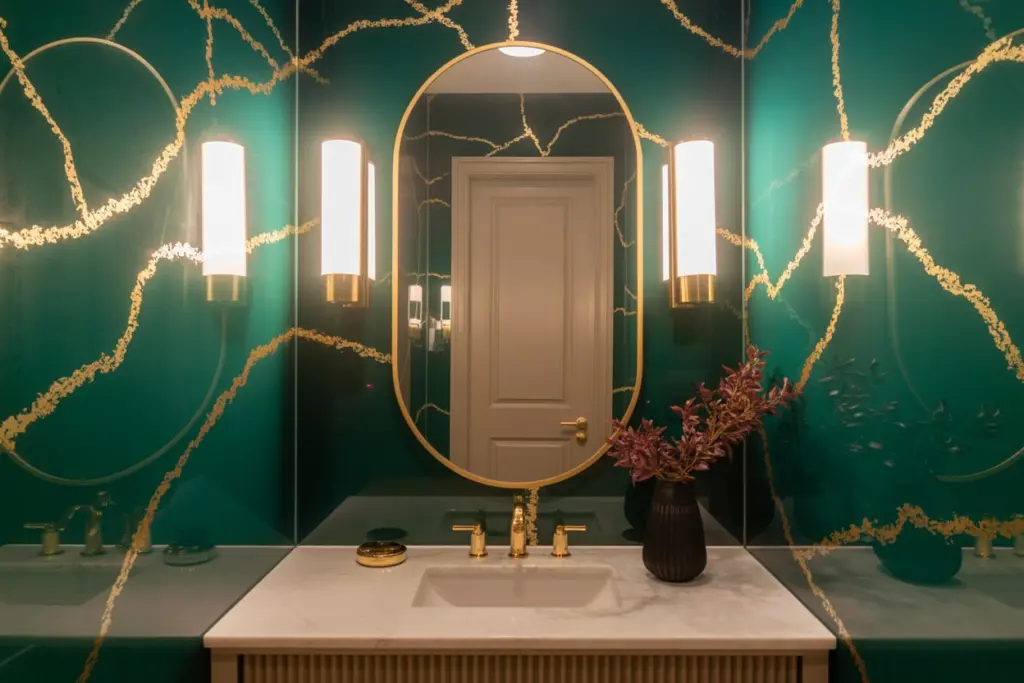
Minimalist Style
Embrace a minimalist style by focusing on keeping the design basic, uncomplicated, and tidy. Opt for lighting fixtures with simple forms and minimal embellishments. Maintain a neutral color scheme, predominantly using whites, grays, and beige shades, to create a serene atmosphere. Incorporate organic elements like wood or stone to introduce warmth and texture to the space. Emphasize functionality and prioritize storage solutions to ensure a clutter-free environment. By adhering to these principles, you can create a minimalist style that exudes simplicity, elegance, and tranquility in your living space.
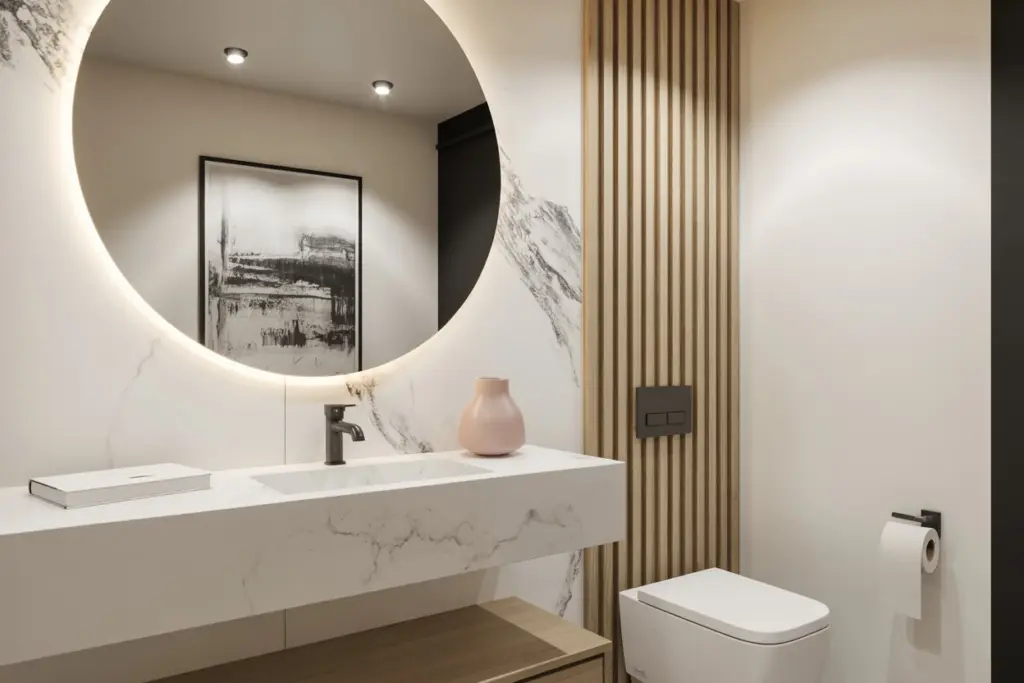
Classic Style
Create a timeless classic style by incorporating traditional elements into your space. Consider adding items like pedestal sinks, or ornate mirrors to evoke a sense of sophistication. Enhance the elegance further by incorporating wallpaper or decorative tiles with traditional designs. To add a touch of architectural charm, contemplate the addition of moldings or paneling.
Opt for a smooth and neutral color palette, including creams, pastels, or muted tones, to create a serene ambiance. Choose fixtures with elegant details, such as cross handle faucets or intricate patterns, to elevate the overall aesthetic. By carefully curating these elements, you can achieve a classic style that exudes grace, refinement, and timeless beauty.
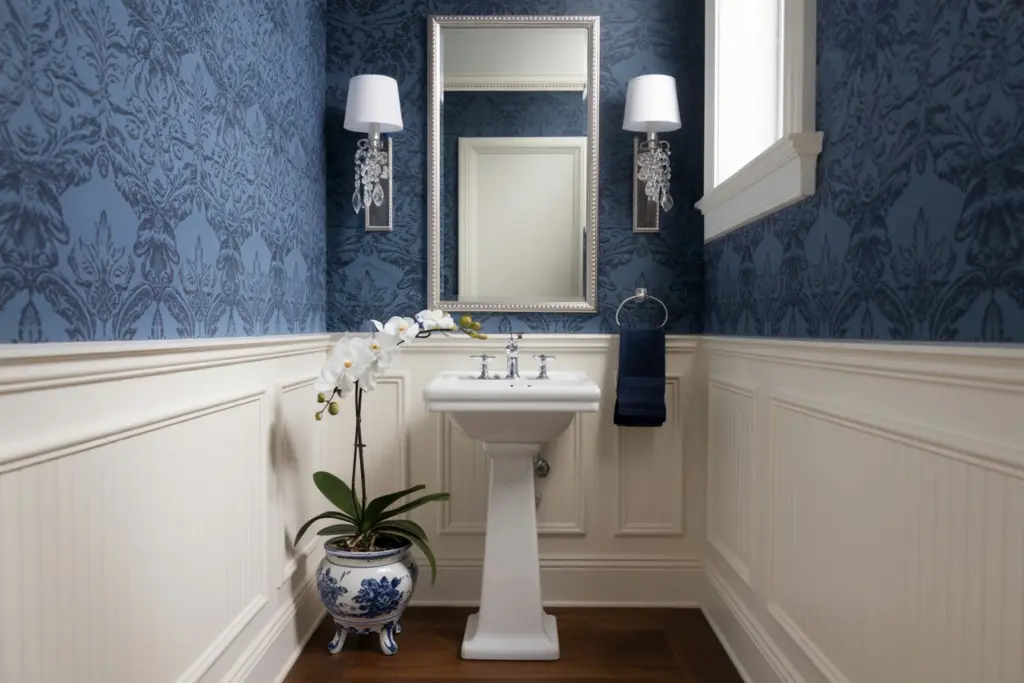
Contemporary Style
When aiming for a contemporary style, it’s essential to strike a balance by combining aspects of old and modern styles. Additionally, opt for lighting fixtures with simple, yet sophisticated lines to complement the overall aesthetic. Experiment with different textures and materials, such as incorporating glass highlights or seamlessly fusing metal and wood, to add depth and visual interest.
To create a modern feel, incorporate strong accents and contrasting colors that make a statement. Consider including distinctive or statement elements, such as a contemporary chandelier or an art installation, to elevate the design and create a focal point. By seamlessly integrating these elements, you can achieve a contemporary style that seamlessly blends old and new, resulting in a visually captivating and harmonious living space.
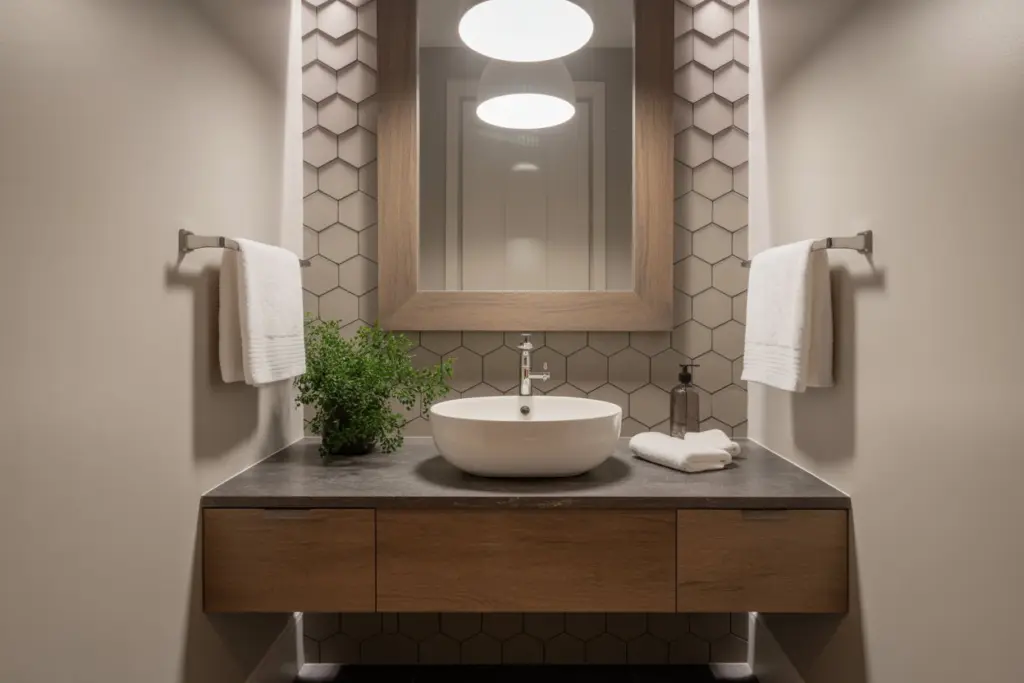
The key elements of the powder room
The shower
The shower typically serves as the focal point of the powder room.
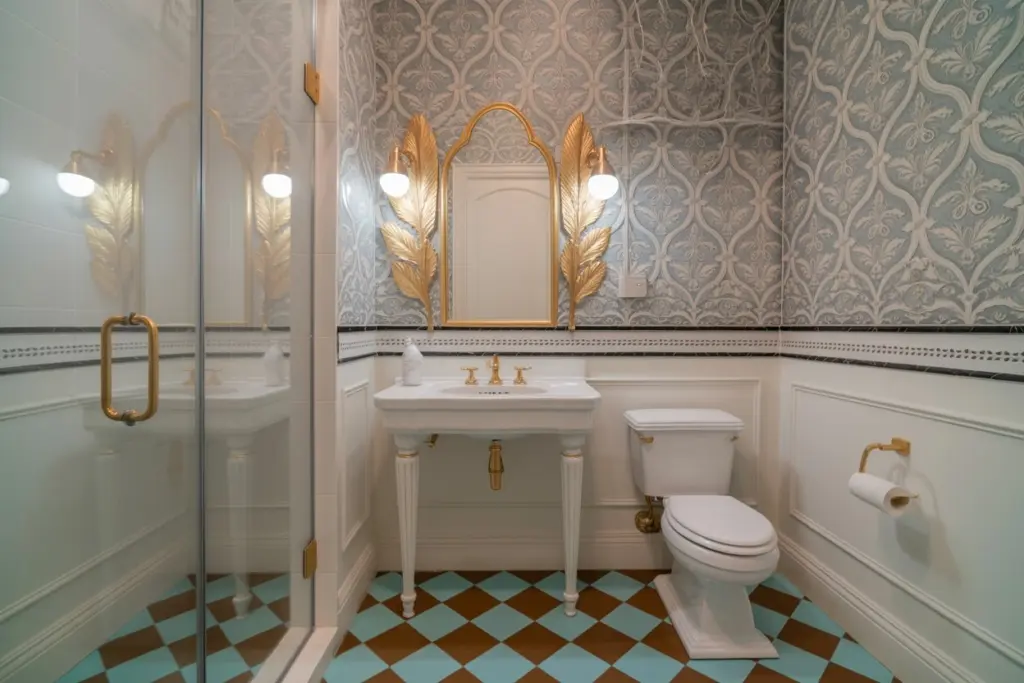
Sinks and basins
Sinks and basins play a vital role in the powder room. Let’s explore various types of washbasins, such as undermount sinks, free-standing basins, wall-hung sinks, and pedestal sinks. Additionally, we will provide you with ideas for materials and styles to consider.
Undermount Sinks
Installing undermount sinks beneath the countertop creates a seamless and sleek look. When the sink is mounted underneath the surface, it remains concealed, resulting in a rimless sink with no visible edges. This style is popular for its clean lines and easy maintenance.
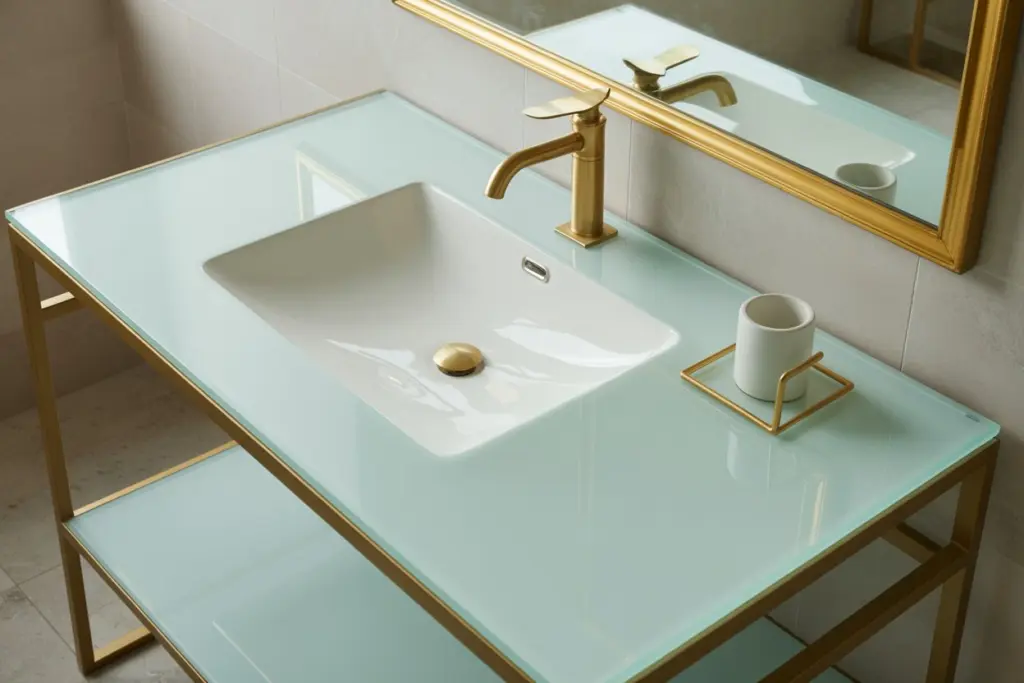
Freestanding Basins
Freestanding basins are stand-alone units that do not require mounting or support from a countertop or vanity. They often feature striking designs and can serve as eye-catching focal points in the powder room. These basins can come in various shapes, sizes, and materials, allowing for creativity in the overall aesthetic.
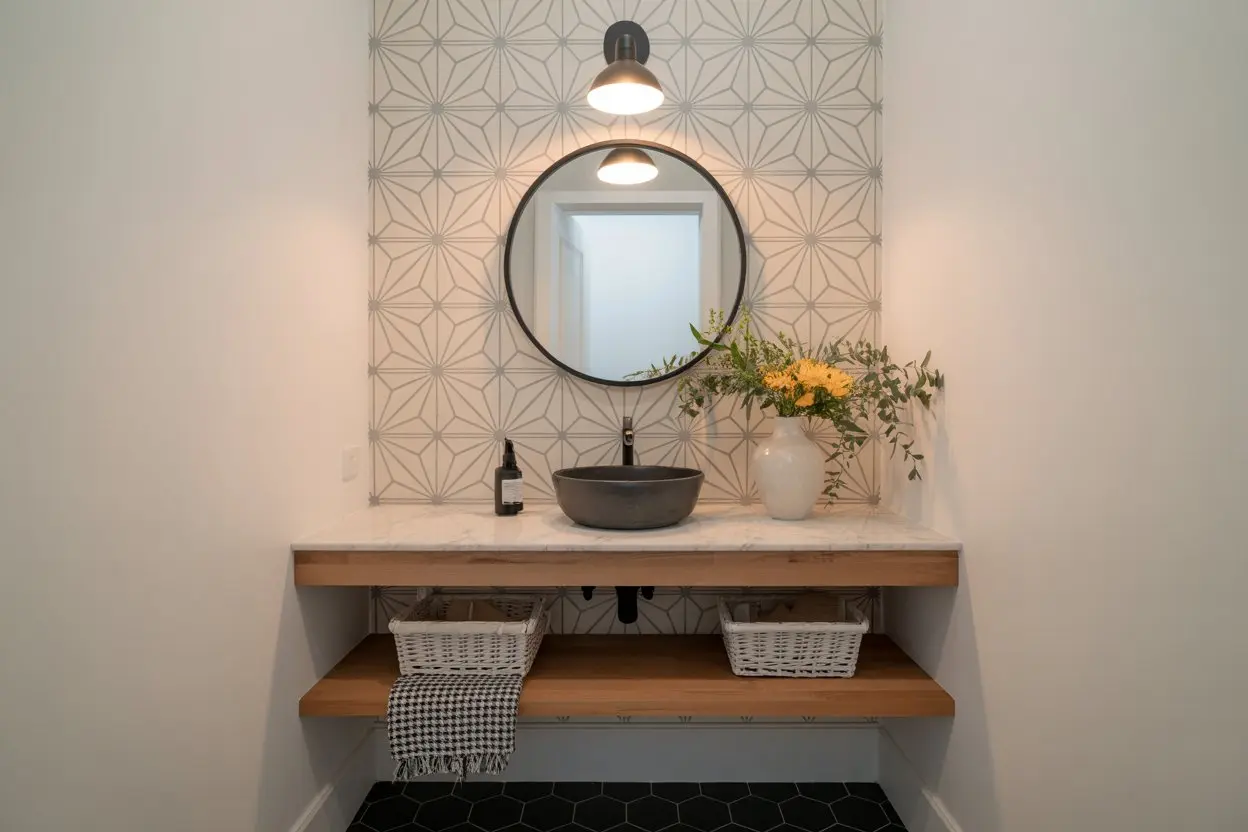
Wall-Hung Sinks
Wall-hung sinks are mounted directly on the wall, without the need for a vanity or supporting structure. They offer a minimalist and space-saving solution, making them ideal for smaller powder rooms. Wall-hung sinks provide an open and airy feel, with the plumbing often concealed within the wall.
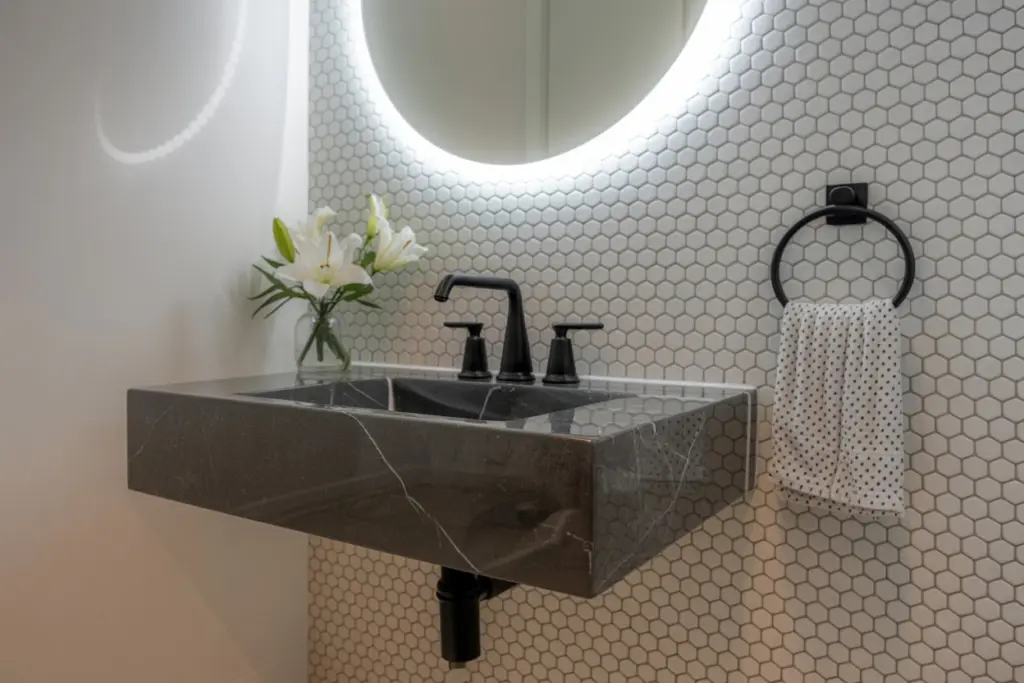
Pedestal Sinks
Pedestal sinks consist of a basin supported by a pedestal or column, which conceals the plumbing. This classic and elegant design is a popular choice for traditional or vintage-themed powder rooms. Pedestal sinks can enhance the overall aesthetic and create a sense of sophistication.

Tidying up
Storage is crucial to maintaining a well-organized powder room. We’ll give you tips on how to maximize storage space, using cabinets, shelves, wall niches and other clever solutions.
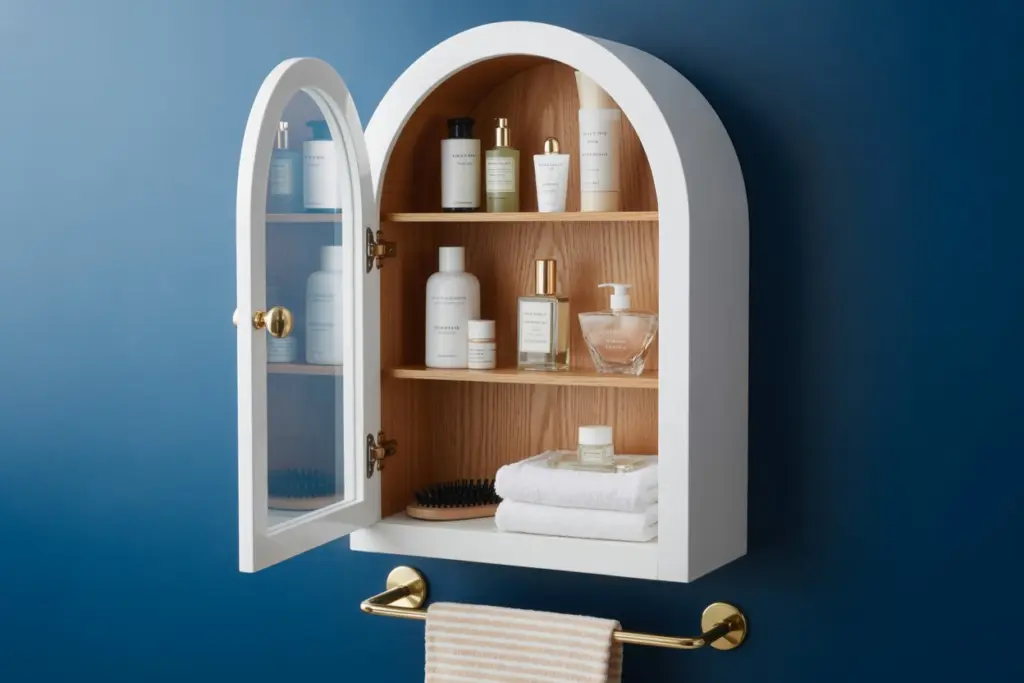
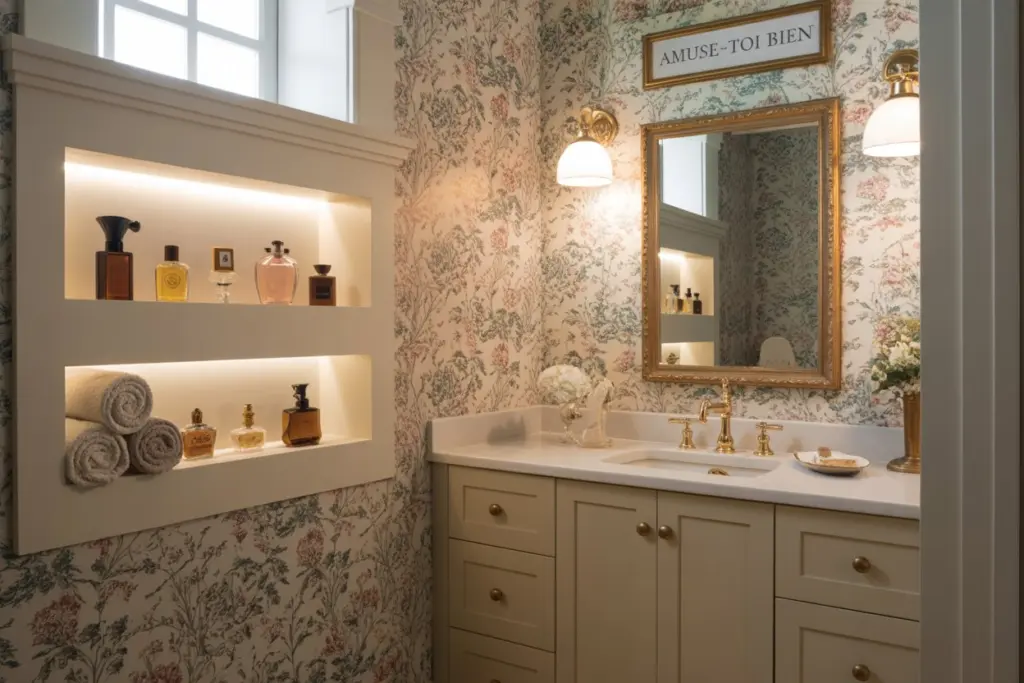
Powder room: Materials, colors and finishes
Floor coverings
We’ll look at different flooring materials suitable for the powder room, such as tiles, vinyl, waxed concrete and treated wood. You can take a closer look at how to choose your flooring, as well as tips on selecting colors and finishes.
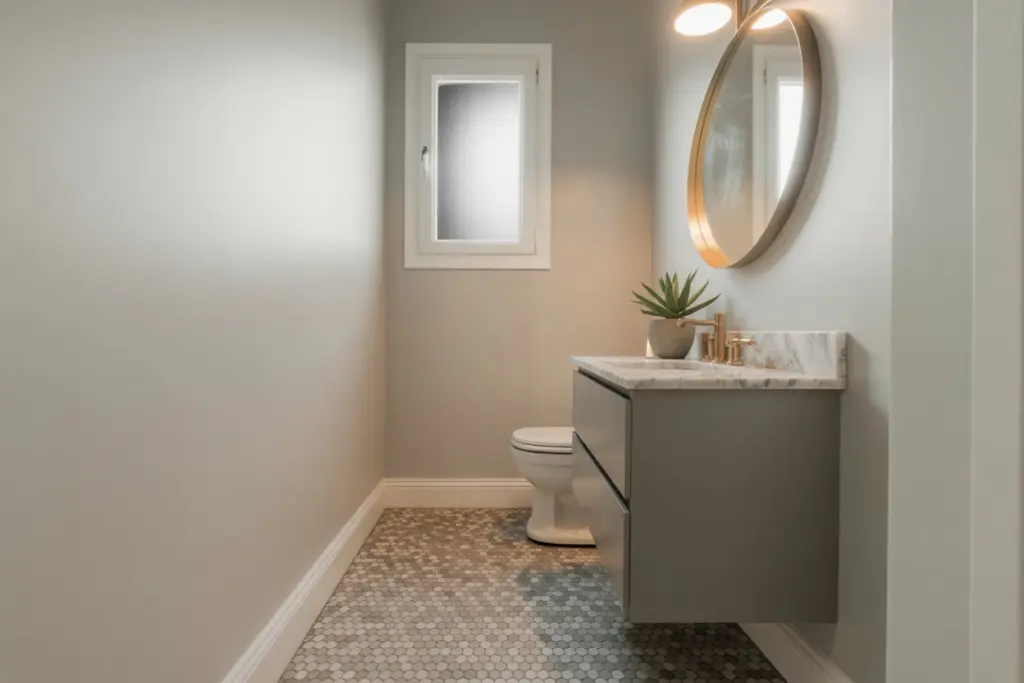
Wall coverings
Powder room’s walls should be given extra consideration when it comes to material selection. And consider alternatives including tiles, paint, wall panels, water-resistant wallpaper, and other coverings appropriate for the humidity in the space.
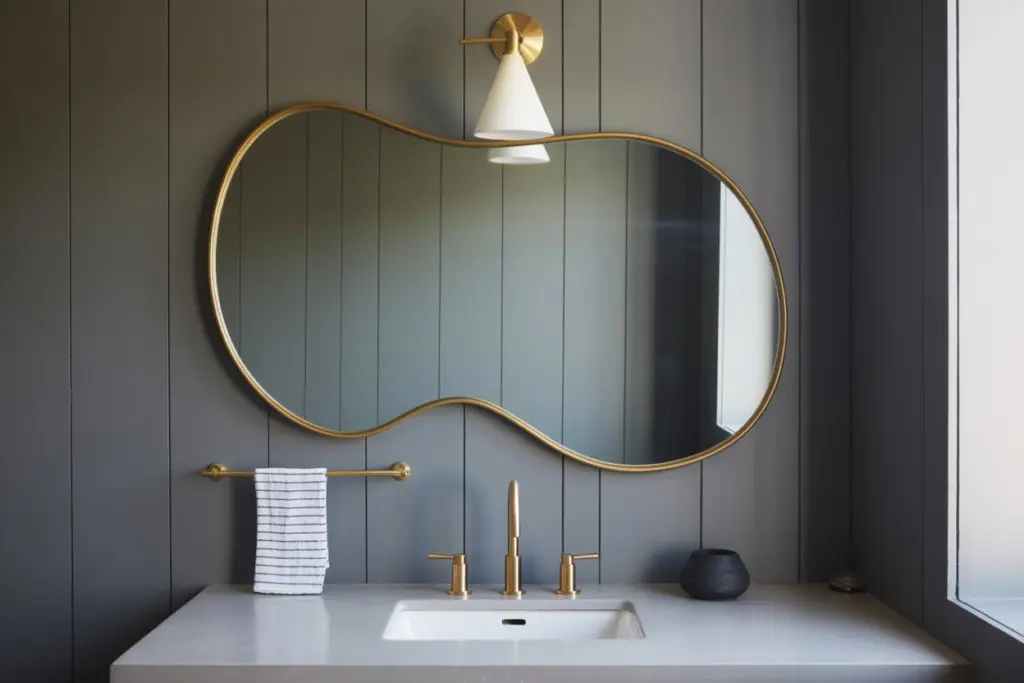
Finishes
Details and finishes can make all the difference to the look of your powder room. And this is why you must focus on faucet options, fixtures, mirrors, accessories and textiles to complete your design and add stylish touches.
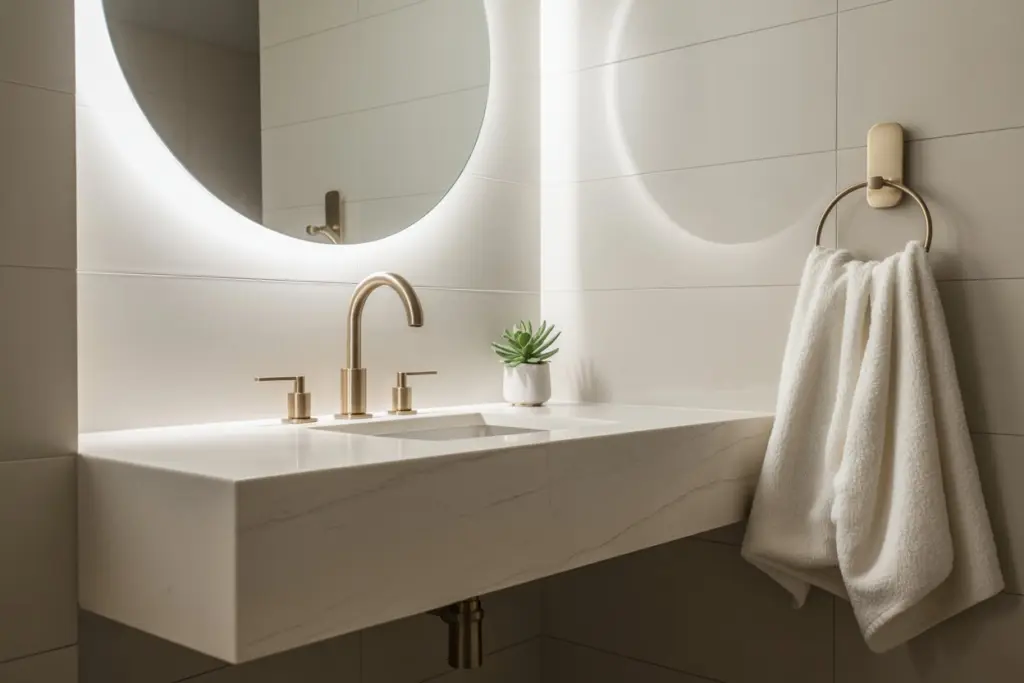
Color and Texture
Color Palette
Pick a color Palette that goes well with your home’s general color scheme. Although you don’t have to utilize the exact same colors, try to choose ones that work well together. Use hues, tones, or accents that resemble those in nearby rooms or communal spaces.
Color Scheme
Choose a color scheme for your powder room that creates the right ambiance. If you want to make a room, feel wide and airy, think about choosing neutral or light colors. If you want to make a dramatic statement, try using strong or colorful colors. Use wallpaper, tiles, or paint to add accents and patterns to provide visual interest.
Texture and Materials
Add tactile and textural accents to a powder room area to improve its aesthetic appeal. To create a distinctive and opulent atmosphere, incorporate elements such as wood, natural stone, mosaic tiles, glass, or other materials. To give the room depth and dimension, pay attention to the floors, worktops, and backsplashes you choose.
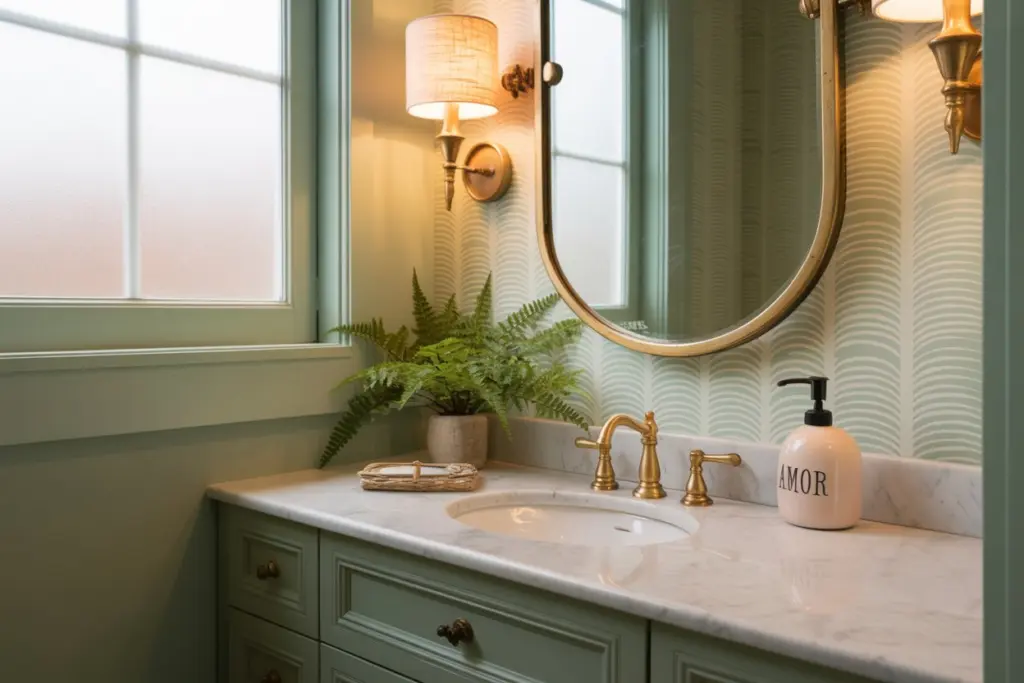
Practical tips and final considerations for powder room
Lighting
Lighting plays an essential role in the powder room, both for practical reasons and to set the mood. We’ll provide you with advice on general lighting, functional lighting around mirrors and accent lighting to highlight certain elements.
General lighting
General lighting is the foundation of powder room lighting. It ensures uniform brightness throughout the room and creates a welcoming atmosphere. Here are some tips for general lighting:
- Ceiling lights: Install recessed, pendant or LED ceiling lights for overall washroom illumination. Be sure to choose bulbs with the right wattage to provide sufficient illumination.
- Adjustable brightness: For greater versatility, consider installing a lighting system with a dimmable option. This will allow you to adjust the brightness to suit your needs and create different moods.

Functional lighting around mirrors
Lighting around mirrors is crucial for grooming tasks, such as applying make-up or shaving. Here are some tips for effective functional lighting:
- Front lighting: Place wall sconces on either side of the mirror to eliminate shadows on the face and ensure even lighting. Avoid installing lights directly above the mirror, as this can create unwanted shadows.
- Color temperature: Choose bulbs with a color temperature close to natural light (around 4000-5000 Kelvin) for accurate color rendering.
- Adjustable lighting: Choose fixtures with adjustable shades or directional bulbs. This allows you to adjust the angle of the light to suit your specific needs.
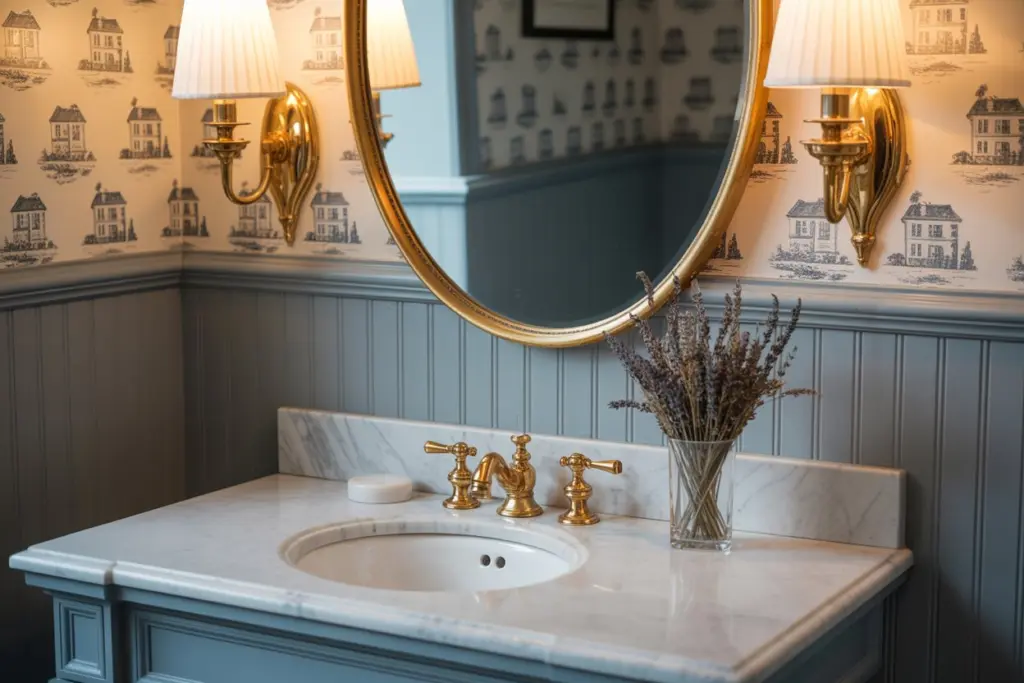
Accent lighting
Accent lighting is used to highlight certain features in your powder room, such as architectural elements, decorative niches or plants. Here are a few tips for accent lighting:
- Directional lighting: Use recessed spotlights, floodlights or LED strip lights to direct light towards the elements you wish to highlight. Adjust the angle and light intensity to create the desired effect.
- Under-shelf lighting: If you have open shelves in your powder room, install LED strips underneath to illuminate the objects on them and add a decorative touch.
- Colored lighting: To create a specific mood, you can use colored bulbs or fixtures with colored filters to accentuate certain design elements or add a playful ambience.
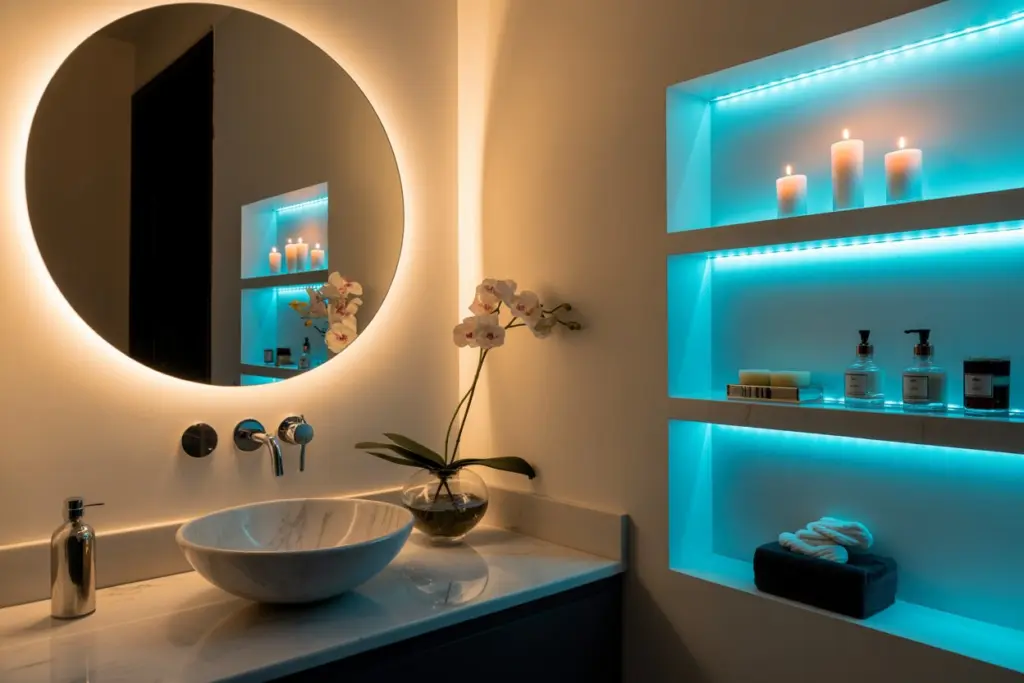
In order to design a powder room that is both practical and visually beautiful, the lighting is a crucial component. You can make your powder room feel airy and pleasant by blending general lighting that is evenly distributed, useful lighting around mirrors, and accent lighting to draw attention to certain features. Don’t forget to consider the unique requirements of each space and choose high-quality bulbs with the right color temperature.
Ventilation
Good ventilation is essential to prevent moisture and mold problems in the powder room. We’ll give you recommendations on proper ventilation, including natural and mechanical ventilation options.
Natural ventilation
- Windows: If your powder room has windows, use them for natural ventilation. Open them during and after use to allow fresh air to circulate and moisture to escape. Make sure you have appropriate security devices to prevent unauthorized access.
- Door: Leave the powder room door half-open after use to facilitate air circulation.
- Aerators: Install aerators on windows or walls to improve air flow and help moisture escape.
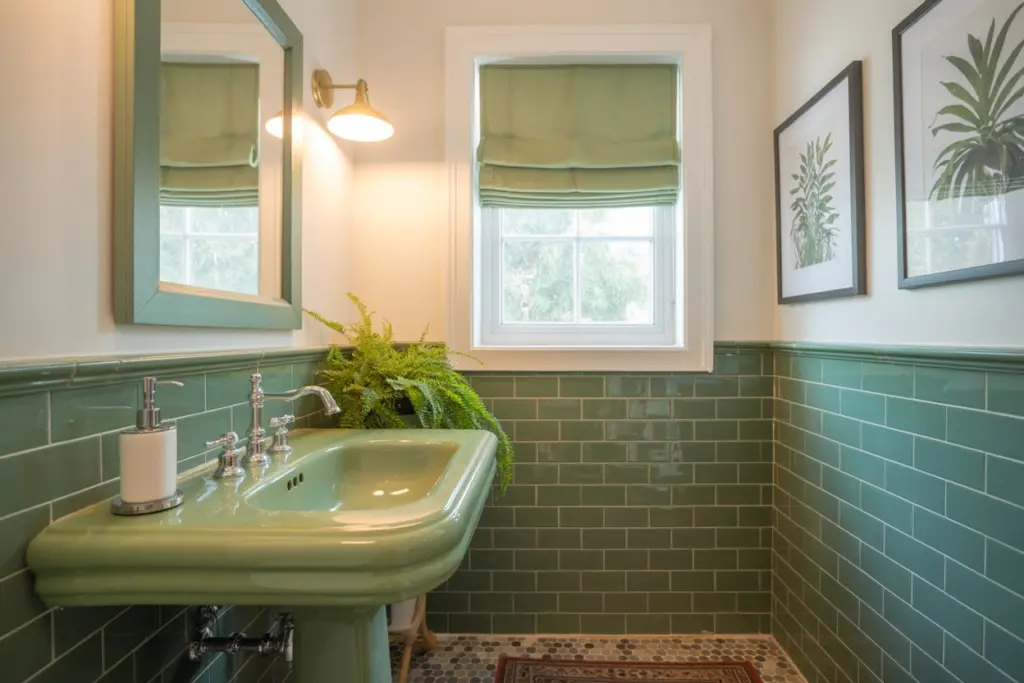
Mechanical ventilation
- Extraction fans: Extraction fans are mechanical devices installed in the bathroom to extract stale air and moisture. They are particularly effective in bathrooms without windows or with limited natural ventilation. Make sure you install the right size fan for the size of your bathroom.
- Fan location: Place the exhaust fan near the shower to capture water vapor at its source. Make sure it’s properly oriented to exhaust air to the outside of the house, preferably through the roof or an exterior wall.
- Timer or humidity sensor: To optimize the efficiency of the exhaust fan, consider installing a timer or humidity sensor. This will allow the fan to run for a preset time after leaving the powder room, or to activate automatically when the humidity level reaches a specific threshold.
- Fan maintenance: Clean the exhaust fan regularly to remove dust and obstructions that could reduce its efficiency.
Combining natural and mechanical ventilation
For optimum ventilation, you can combine both natural and mechanical ventilation. For example, use open windows during the day and an extractor fan at night, or in conditions where natural ventilation is limited.
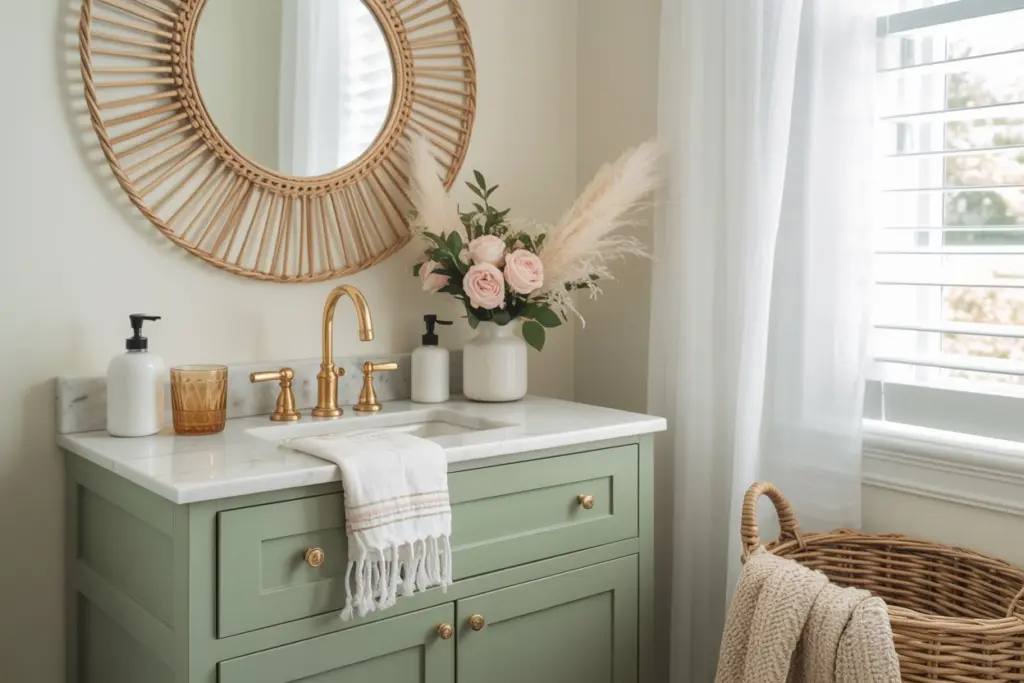
Maintaining a healthy powder room and avoiding moisture and mold issues requires proper ventilation. Use windows and open doors for natural ventilation, and think about adding an exhaust fan to enhance circulation and moisture removal. Ventilation equipment has to be cleaned and maintained often to be effective. Your powder room will be a cozy, healthful space if it has adequate ventilation.
Durability and maintenance
The powder rooms. Is a room subject to humidity and wear. We’ll guide you in your choice of durable, easy-to-maintain materials, and give you tips on how to extend the life of your powder room.
Proper use
- Avoid excessive use of hot water, as this can cause premature wear to plumbing fixtures and pipes. Use hot water only when necessary.
- Avoid flushing harsh chemicals down toilets, sinks or drains, as this can damage pipes and seals. Use mild, environmentally friendly cleaning products.
- Be sure to use bath and shower products suitable for plumbing to avoid soap deposits or blockages in drains.
Regular maintenance
- Regularly clean washroom surfaces, including toilets, sinks, tubs and showers, to remove soap deposits, mold and residues that could damage surfaces.
- Regularly check the seals around bathtubs, showers and sinks. If you notice any signs of deterioration or leakage, replace the gaskets to avoid moisture problems.
- Clean ventilation grilles and exhaust fan filters to maintain their efficiency.
Damage prevention
- Use non-slip mats in the shower to prevent falls and damage caused by slipping.
- Avoid placing heavy or sharp objects on fragile surfaces, such as ceramic sinks or quartz countertops, to prevent splintering or cracking.
- Protect wooden surfaces, such as cabinets or shelves, with a sealer or protective coating to prevent moisture damage.
Professional maintenance
- Hire a qualified plumber to do routine checks of the plumbing, faucets, and connections for leaks or possible issues.
- If you discover leaks or plumbing issues, have them fixed right away to prevent more harm.
A well-maintained powder room will not only last longer, it will also remain functional and aesthetically pleasing over time. Take good care of your shower room and it will provide you with comfort and satisfaction for many years to come.
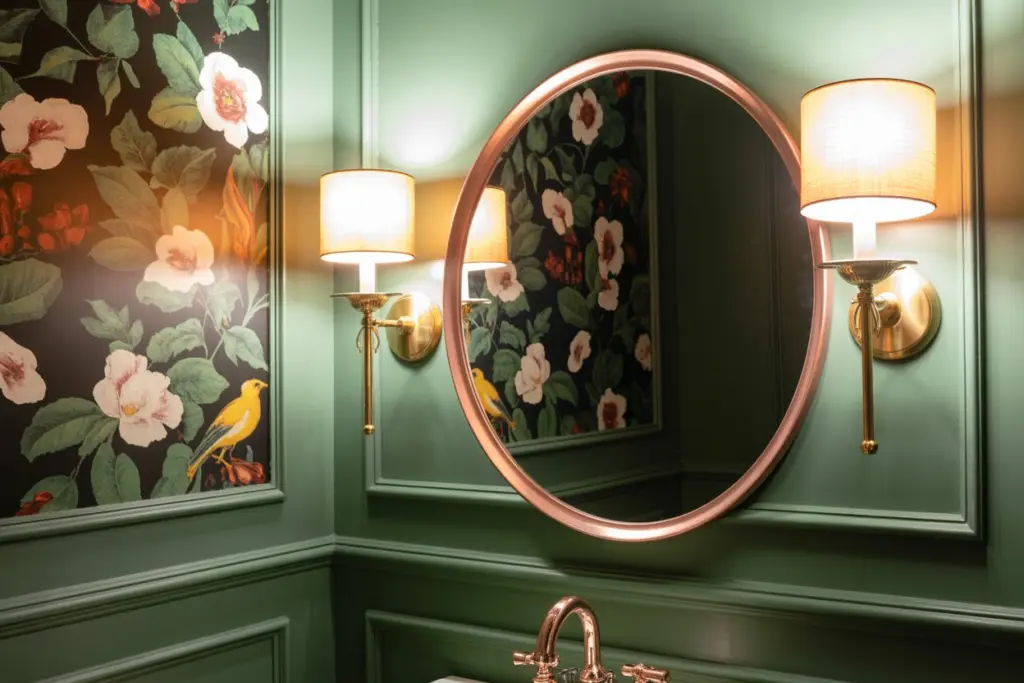
A fun project that may improve your daily life is creating a practical and stylish powder room. You may design a room that suits your needs and expresses your particular style by carefully choosing critical components, materials, and finishes while adhering to the planning and design phases. A powder room where you may unwind, revive, and pamper yourself in luxury and style will be the final result, whether you choose a modern, traditional, or contemporary design.
